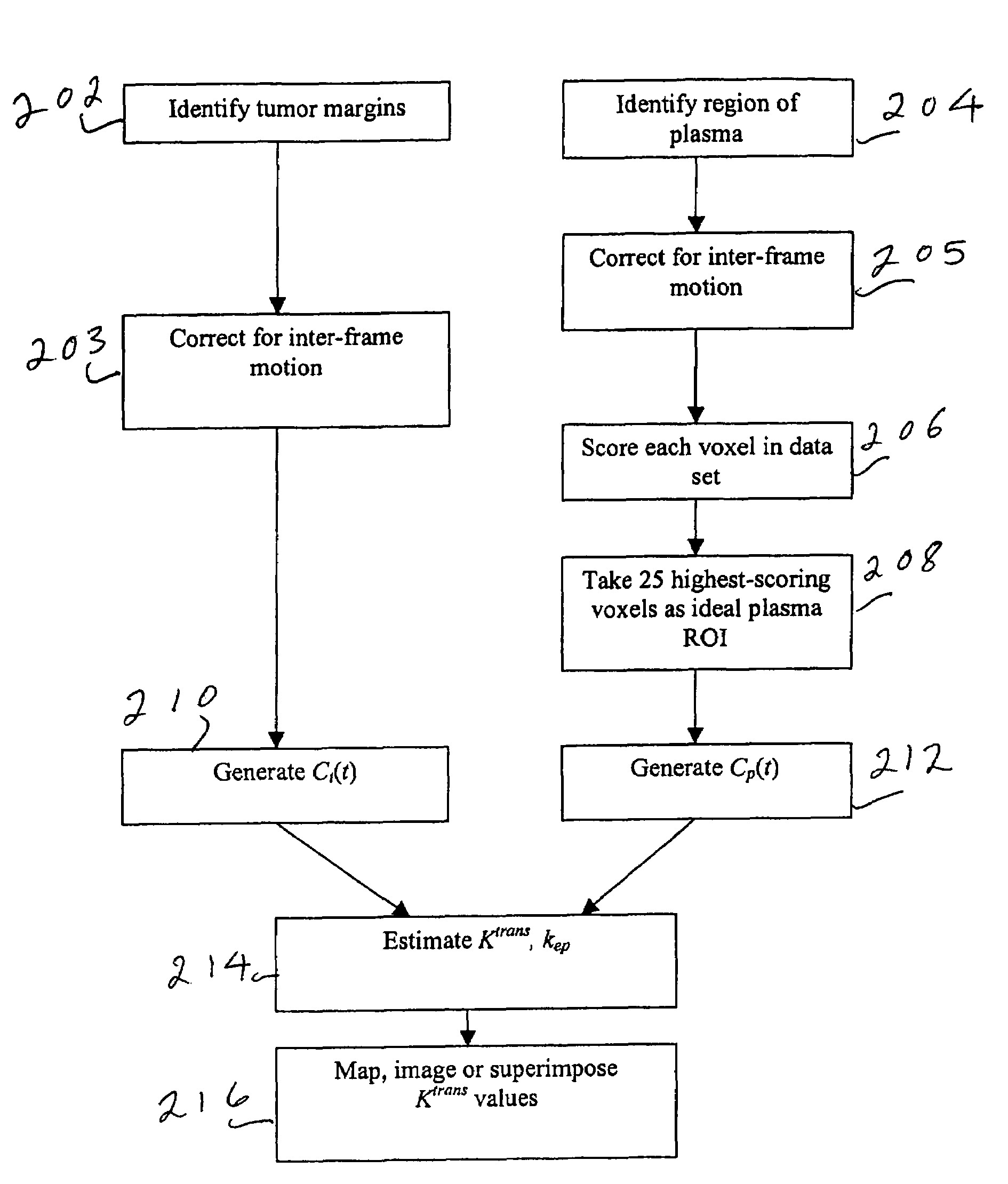System and method for identifying optimized blood signal in medical images to eliminate flow artifacts
a technology of optimized blood signal and flow artifact, applied in image enhancement, instruments, applications, etc., can solve the problems of frequent corruption of arteries, and achieve the effect of eliminating flow artifacts and improving accuracy
- Summary
- Abstract
- Description
- Claims
- Application Information
AI Technical Summary
Benefits of technology
Problems solved by technology
Method used
Image
Examples
Embodiment Construction
[0023]A preferred embodiment of the present invention, as well as experimental results, will now be set forth in detail with reference to the drawings.
[0024]The process according to the preferred embodiment will be disclosed with reference to the flow chart of FIG. 2. Tumor margins are identified in step 202 using Geometrically Constrained Region Growth (GEORG). This technique requires a user to place a seed or string of seeds within each desired structure throughout the volume using one or more mouse clicks. The seed regions then expand into neighboring voxels provided that two constraints are satisfied: the grayscale value of the neighboring voxel must have a high probability of falling within the statistical distribution defined by all currently included voxels, and inclusion of the neighboring voxel must not cause the shape of the included region to deviate excessively from the a priori regional shape model. Once initiated, the expansion process continues until a stable boundary...
PUM
 Login to View More
Login to View More Abstract
Description
Claims
Application Information
 Login to View More
Login to View More - R&D
- Intellectual Property
- Life Sciences
- Materials
- Tech Scout
- Unparalleled Data Quality
- Higher Quality Content
- 60% Fewer Hallucinations
Browse by: Latest US Patents, China's latest patents, Technical Efficacy Thesaurus, Application Domain, Technology Topic, Popular Technical Reports.
© 2025 PatSnap. All rights reserved.Legal|Privacy policy|Modern Slavery Act Transparency Statement|Sitemap|About US| Contact US: help@patsnap.com



